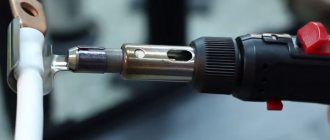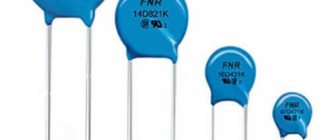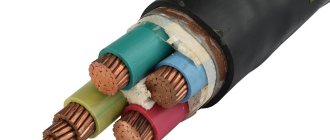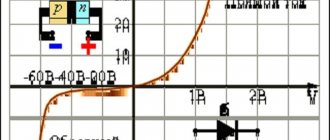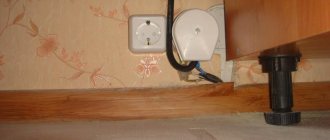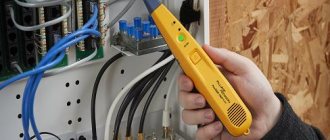In electrical engineering, insulating material such as heat-shrinkable tubing is widely used. It is simple and easy to use, has shape memory properties and lasts for several decades without changing its original characteristics.
What is heat shrink tubing?
In the 50s of the last century, the innovative invention of the American engineer Judson Douglas Wetmon was heat-shrinkable tubing. It was positioned as an analogue of the usual PVC electrical tape and quickly caught the fancy of professional electricians and radio amateurs. Nowadays, heat shrink tubing is a special insulating material made from a heat-shrinkable polymer. It is also called a thermotube or thermocambric.
Under the influence of high temperature, such a tube changes its dimensions. In the transverse axis it can be compressed from 2 to 6 times, but the longitudinal compression of a high-quality product is no more than 8-10%. That is, the material is capable of being compressed an almost unlimited number of times and returning to its original shape in the longitudinal axis with virtually no change in length. When compressed, the wall thickness of the material increases, enhancing its electrical insulating properties.
What is heat shrink tubing made of?
Scientists have been developing thermoplastics, that is, substances that easily change their shape when heated, at the beginning of the last century. One of the results of their activities has become the now popular heat-shrinkable tube. It is made from polymers with the addition of special substances. The main raw materials may include:
- polypropylene;
- polyethylene;
- polyolefin;
- polyvinyl chloride;
- polyvinylidene fluoride;
- fluorinated ethylene propylene
- fluoropolymers such as fluoroplastics-4 and fluororubbers.
This material is produced in several stages:
- Initially, it is important to select a polymer with properties suitable for operating conditions. This takes into account the range of operating temperatures, dielectric properties, total cost and others.
- Dyes, stabilizers and other additives are added to the selected polymer.
- The finished raw material is extruded into a tube.
- The key step is the cross-linking procedure using an electron beam or radiation. Thanks to this stage, the polymer is endowed with memory properties of its original shape.
- The final step is heating to a temperature slightly below the melting point of the polymer crystals, and then stretching to the desired length under vacuum.
What is heat shrink tubing for?
The scope of application of heat shrink tube is extensive. It is used for:
- Providing a reliable electrical insulating layer during electrical installation work.
- Marking of cables and wires during installation work.
- Protection against corrosion and rotting of wooden and metal pipes and supports.
- Heat-shrink insulation is used to improve the ergonomics of various handles and is an excellent protective layer from the effects of aggressive environmental factors.
- Ensuring longitudinal sealing of cable bundles.
- Creation of attributes with dielectric properties from ordinary tools,
What is heat shrinking: principle of operation
The operating principle of heat shrinkage is based on the shape memory effect. During the manufacturing process, the polymer is exposed to a stream of charged electrons, due to which the molecules of the material receive additional connections in the transverse direction of the product (cross-linking technology).
Diagram of the connection of polymer molecules with the cross-linking effect:
- Initial position of polymer chains in the material.
- Irradiation of polymer and abstraction of hydrogen atoms.
- Combination of carbon atoms and formation of cross-links.
Thus, when exposed to temperature, the polymer returns to its original size, changing not in the linear (longitudinal) direction, but in the radial (transverse) direction. This tube has a long shelf life without reducing its basic performance characteristics.
Important! In the electrical goods market, this product can be known under various names: thermal cambric, thermal tube, heat-shrinkable (shrinkable) insulation. https://www.youtube.com/embed/GVtq6fan0Lw
Characteristics of Heat Shrink Tube
When choosing a material, you need to know the basic operational parameters of the heat shrink tube. These include:
- Shrinkage rate, which can be from 200 to 600%.
- Diameter of the product before and after heat treatment.
- Operating temperature range, which varies depending on the original polymer used.
- Resistance to certain chemical and physical operating environments. These include resistance to oils and gasoline, light stabilization and heat resistance or non-flammability.
- When working, it is important to take into account the desired heat shrink temperature.
- The shape of the product does not affect the operation of the heat-shrinkable tube, but is modified for ease of transportation. It can be round, oval or flattened.
- Wall thickness and features of the inner surface of the tube.
What temperature can heat shrink tubing withstand?
An important parameter when choosing a product is the shrinkage temperature of the heat-shrinkable tube and its operating temperature range. All these parameters depend on the raw materials used:
- Polyolefins
(PE) are considered one of the leading materials for the production of thermoplastics. It can withstand temperatures from -50 to +125℃. Some of them include additives that increase the upper limit to +150℃, which is the limit for this polymer. - The thick-walled heat-shrinkable synthetic rubber tube
can withstand ambient temperatures up to +170℃. However, the high cost of production makes the product little popular. - Fluorine-containing elastomers
are considered more durable and are used in the range of -50… +220℃. - Polyvinyl chloride
is considered the cheapest material, but it is allowed to be used only at parameters of -20… +70℃. - Fluoropolymers
are considered the most durable, because their operating temperature range is -60… +370℃.
Diameter value and shrinkage coefficient
The most important indicator of a thermocambric is how much the size of the tube changes under the influence of temperatures. Therefore, in technological indicators, the main importance is the shrinkage coefficient, which denotes the ratio of diameters in the initial form and after thermal exposure. The markings indicate the dimensions before and after shrinkage. For example, the name HERE NG 40/20 means that the heat-shrinkable cambric has an internal diameter before shrinkage of 40 mm and a total diameter of 20 mm after shrinkage. The higher the coefficient, the more difficult it is to make a cambric. The most commonly used products are with ratios of 4:1, 3:1 and 2:1. Although there are other sizes.
How does the size of thermal cambric change after shrinkage?
When marking these materials in Russia and Asian countries, it is customary to use designations in millimeters. Manufacturers from America and Europe indicate parameters in inches. Sometimes these characteristics can be used to determine where the tube was made.
Important! Sometimes the diameter before shrinkage is indicated in the product parameters, and the name shows only the coefficient, not the real numbers. The diameter of the cambric is determined by the size of the products for which it is intended
A wire with a cross-section of 3.5 can be insulated using heat-shrinkable tubing with a large internal diameter, which, after shrinking, takes on a size smaller than that of the wire. The diameter of the cambric must exceed the dimensions of the part by at least 10 percent. On the other hand, we must not forget that the larger the parameters of the tube, the thicker the element will become at the shrinkage site. The thickness of the cambric itself can also be different.
The diameter of the cambric is determined by the size of the products for which it is intended. A wire with a cross-section of 3.5 can be insulated using heat-shrinkable tubing with a large internal diameter, which, after shrinking, takes on a size smaller than that of the wire. The diameter of the cambric must exceed the dimensions of the part by at least 10 percent. On the other hand, we must not forget that the larger the parameters of the tube, the thicker the element will become at the shrinkage site. The thickness of the cambric itself can also vary.
Types of Heat Shrink Tubing
All products available in specialized stores differ not only in the main material used in production, but also in a number of other parameters. Happens:
- Adhesive heat shrink tube. A special adhesive is applied to its inner surface, which during heat shrinking creates a durable waterproofing coating.
- Product without adhesive inner coating.
You can buy material with different wall thicknesses. According to this parameter, all tubes are divided into:
- thin-walled;
- with average thickness values;
- thick-walled.
By interaction with electricity there are:
- electrical insulating;
- semiconductors;
- tubes with the ability to equalize the electric field voltage.
In terms of resistance to the operating environment, there are products:
- oil and petrol resistant;
- chemically inert;
- high voltage;
- heat-resistant or non-flammable.
All products differ in color:
- Colored heat shrink tubing is often red, white, black, green, blue and yellow. Two-color yellow-green tubes are used for ground insulation.
- Transparent tubes are used for marking wires. Under the insulation is placed paper with the inscription of the cable brand, its cross-section, power supply and other things.
basic information
Objectively speaking, HERE is a replacement for the good old electrical tape. One disadvantage of this alternative is that it is almost impossible to use on surfaces of different thicknesses.
In addition to the main property of heat shrinkage, the tubes also have different colors. Among them you often find red, blue, green, and yellow. There are also striped ones.
Color is needed not only for beauty, but also for marking wires of different types and purposes. And this greatly simplifies working with them in case of breakdown.
It is necessary to tell in more detail about the marking of wires. Basically, such markings are used in three-phase electrical circuits, where red, yellow and green colors are used. Each color corresponds to its own phase. Grounding is usually marked HERE with yellow and green stripes.
How to choose heat shrink tube?
Before purchasing a set of heat shrink tubing, it is important to decide on a number of parameters:
- Product operating conditions
. This parameter is considered one of the most important, because you need to take into account the range of possible temperatures and the conducted voltage in which the wires will be exposed, the impact of bad weather factors, the possible ingress of chemicals (oil, gasoline) and some others. - Purpose of use
: cable insulation, grounding, wire marking. - Product diameter
. It is selected based on the “-10+20” rule. This means that, according to the size of the wires, the minimum and maximum shrinkage limits are the specified parameters. - Length
. This indicator is not as important as the diameter, but you shouldn’t forget it either. When heat shrinking, high-quality products are shortened by only 5-7%, while inexpensive materials can shrink by 20%.
Heat shrink tube - dimensions
When carrying out a number of high-precision works, it is worth taking into account the size range of the product, which includes the following parameters:
- The diameter of the product as delivered, which in many CIS countries is measured in millimeters. It can vary from 12 to 140 mm. Large-diameter heat-shrinkable tubing is also available for sale, used by professionals when carrying out a number of complex jobs.
- The maximum diameter of the tube after complete heat shrinking can be from 3 to 42 mm and above.
- The wall thickness after shrinkage can be from 0.4 to 1.2 mm.
- The thickness of the adhesive layer after heat shrinking can be from 0.5 to 1 mm.
- Length of the product. Sets of tubes 50-100 cm long are sold for private use. Craftsmen purchase the product in a roll, the length of which varies from 25 to 200 m.
Marking of heat shrink tubes
To successfully select a product, you need to understand the markings indicated on each package by the manufacturer. More often they indicate:
- Heat shrinkage coefficient
. It can be expressed either as a percentage or as a ratio, for example 2:1 or 3:1. - The inner diameter of the tube before and after heating
. It can be indicated in millimeters or inches depending on the country of production and looks like 10/5, 60/25, etc.
Advantages and disadvantages
When compared to other types of insulation, heat shrink has at least four advantages.
Firstly, since the heat-shrinkable tube fits very tightly, it does not move due to various mechanical influences. Secondly, installation is a simple and quick process, but you still need to know some rules of use. Thirdly, after shrinking, the insulation material becomes stronger, so the wire becomes even more resistant to mechanical damage and acquires additional rigidity at the junction. And the service life is much longer than that of conventional electrical tape. The fourth plus is a wide range of applications.
Among the disadvantages of the tube HERE, the following can be noted:
- It cannot be reused, because when heated it changes its diameter, so it will definitely be damaged when removed.
- The price of heat-shrinkable tubing is higher than the price of electrical tape, but not so much that it becomes a decisive factor when choosing a protective and insulating material.
If during use some other shortcomings are discovered, then these are shortcomings of the selected manufacturer.
The video below provides a visual comparison of heat shrink and electrical tape:
How to heat heat shrink tubing?
Most products are used for electrical insulation of wires in home wiring, automotive applications, and some electrical applications. In order for heat-shrinkable tubes for wires to perform their functions properly, they must be subjected to a shrinkage process after installation. This is done by applying a heat source to the insulating material. Depending on the raw materials used in the tube, this source may be:
- open flame sources: matches, lighter or burner;
- soldering iron tip;
- construction hairdryer
Hair dryer for heat shrink tube
The safest method of heating heat shrink tubing with glue is to use hot air from a hair dryer. Thanks to uniform airflow without local overheating, it is possible to preserve the product without allowing melting and swelling from individual elements. After all, if the tube is damaged, then it loses all its properties, so it should be replaced with a new one or wrapped with PVC tape.
Best suited for working with this material:
- A construction hair dryer, which is not always on the list of home craftsman tools.
- A hair dryer from a soldering station, which is also not used in all private houses and apartments.
- A household hair dryer is not suitable for these purposes, since the temperature of the air heated by it is not sufficient for heat shrinking.
Application area
The main purpose of using heat shrink tubing is to insulate exposed wires. In parallel with this, the following is carried out:
- longitudinal sealing of the cable using products with an internal layer of hot-melt adhesive (also used to protect the pipeline);
- wire marking;
- exclusion of corrosion damage;
- ensuring mechanical strength of the connection;
- protection of a person from electric shock when the voltage is on;
- thermal insulation.
Due to its technical characteristics, variety of materials for manufacturing, diameter and thickness, the scope of application has practically no restrictions. This can range from the assembly of high-precision miniature instruments to large-sized equipment, cars, and ships.
Scale of application
Heat-shrinkable tubing is popular in extending utility lines. This can be electrical wiring in a private home and in an industrial enterprise.
How to use heat shrink tubing at home?
The method of using heat-shrinkable tubing with and without an adhesive layer is simple, so anyone, even a beginner, can handle it. The whole process consists of the following steps:
- From the total roll you need to cut off the required length, taking into account the longitudinal shrinkage. The cut should be perpendicular, without scratches or tears.
- The segment is put on the desired part of the conductor.
- The shrinkage procedure is carried out. At home, it is easier to do it with a lighter or gas torch.
- The heating process is carried out from the middle to the edges for long tubes or products with an adhesive layer. Heating from edge to edge helps reduce the longitudinal shrinkage rate.
- Simultaneous heating on both sides, such as direct application of a flame to the product, is not recommended.
How to stretch heat shrink tube?
With large differences in the diameters of the parts being connected, it may sometimes be necessary to stretch the tube. In the instructions on how to use heat-shrinkable tubing, this action is not recommended, but craftsmen have long and successfully used the following technique:
- To stretch, use pliers, tweezers or scissors.
- The selected tool is inserted into the tube and stretching is gradually begun, opening the parts.
- The stretching is carried out evenly with periodic rotation of the heat shrink. When the edges turn white, the process must be stopped to avoid tearing.
- The stretched part is immediately put on the parts to be joined and used as usual.
Heat shrink for wires: product classification
The existing range of heat shrinks can be divided into several categories. Products are classified according to the following criteria:
- material of manufacture;
- geometric parameters (wall thickness and diameter);
- installation method;
- degree of shrinkage;
- form;
- special features, etc.
Heat shrinks are classified according to the following characteristics: material of manufacture; wall thickness and diameter, installation method, degree of shrinkage and shape
Heat-shrinkable tubes come in oval, round and flattened shapes. This parameter is selected taking into account the method of storage and transportation. Oval and flat products are tubes with a large diameter or thin walls. Round heat shrinks usually have thick walls. Among them there are sometimes tubes with a small diameter. Round heat shrinks have an adhesive layer.
Note! The performance qualities of insulation do not depend on its shape.
Classification of heat-shrinkable tubes by material type
Industrial enterprises produce a large number of materials of polymer origin with thermoplastic properties:
- polyvinyl chloride;
- polyester;
- fluorine rubber;
- polyethylene;
- polyvinylidene;
- polyethylene terephthalate;
- polymers containing polyolefin.
These raw materials are used to one degree or another in production during the production of heat shrinks.
In the process of manufacturing heat shrinks, raw materials such as polyvinyl chloride, polyester, fluorine rubber, polyethylene, polyvinylidene can be used
Polyolefin heat shrink – wire insulation consisting of cross-linked polyethylene. Before use, raw materials are subjected to radiation and chemical treatment. In addition, manufacturers include flame retardants in the material, as well as pigment components. This type of tube is considered the most common. The operating temperature range of polyolefin insulation is from -50 °C to +150 °C. Heat shrinkage easily tolerates contact with oxidizing agents and benzene, while fuels and lubricants destroy its structure during prolonged interaction.
Elastomer is a material based on synthetic rubber. Such tubes are not afraid of the influence of fuels and lubricants, as well as high temperatures (the upper limit is +170 ° C). The cost of such products is quite high.
Large-diameter heat-shrinkable tubes with thin and ultra-thin walls are made from materials such as polyester. At the same time, the resulting products, despite their small thickness, withstand mechanical loads and the effects of chemicals well.
Products made on the basis of silicone have flexibility, a high margin of safety and chemical inertness. The material contains no toxic components. Silicone insulation degrades when exposed to organic solvents.
Heat-shrinkable tubes made from silicone have high flexibility and a large margin of safety.
PTFE insulation has unique performance qualities. The manufacturing process of these products is quite complicated, so their cost is very high.
Insulating tubes made of thermoplastic polyvinyl chloride have a limited operating temperature range - from -20 °C to +80 °C.
Note! Thermoplastic polyvinyl chloride belongs to the category of combustible materials. During combustion, it releases harmful substances.
Types of products by installation method: heat shrink with and without an adhesive layer
Depending on the installation method, adhesive and non-adhesive products are distinguished. In heat shrinks that are installed using a glueless method, the tightness and strength of the connection completely depend on the tightness of the girth and pressure.
Heat-shrinkable tubes are divided into adhesive and non-adhesive products based on the installation method.
Heat shrinks for wires with glue provide stronger and more reliable fixation of connections. In these products, the inner surface is treated with a thermosetting adhesive composition. After the tube is installed, this substance ensures the tightness of the connection, and the heat shrink itself decreases in diameter by approximately three times.
In addition, there are products with additional longitudinal sealing, for example, Deray Duomelt 105. They look like a two-layer fusible tape coated with butyl rubber mastic. Tapes are used not only to seal cables, but also to reduce sound impact, as well as moisture protection.
How to use heat shrink tape? You will need to do the following:
- Fusible tape is used in conjunction with tubes from the same company.
- It is placed inside the wiring harness in the area where the heat shrink will be installed.
- When the tube is heated, the tape melts and fills the voids inside the bundle between the wires.
Heat shrinks for wires with an adhesive layer provide a more durable and airtight fixation of connections
Thanks to the molten tape, the wiring is reliably protected from moisture, condensation, dust and even air.
Features of heat shrink tubes with adhesive layer and solder
The category of adhesive products includes heat shrinks for wires with solder. These tubes have red rings. These pigmented areas are thickened heat shrinks with an adhesive layer. During the heating process, the red rings are compressed and securely fixed over the insulating sheath of the wire. This ensures the connection is protected from moisture penetration and also reduces the likelihood of rupture.
Related article:
Do-it-yourself electrical wiring in a wooden house. Step-by-step methodology for performing work Project development, selection of devices. Grounding device and RCD. Testing.
Between the rings there is solder with flux. To melt this material, a relatively low temperature effect is required - +120 ° C. The diameter of the heat shrink tube at different ends may vary. Manufacturers color-code products to make it easier for customers to select a conductor sleeve.
Heat shrink size chart for wires with solder:
| Cable cross-sectional area, mm² | Marking color | Bore diameter of the sleeve, mm |
| 0,3-0,5 | White | 1,5 |
| 0,5-1 | Red | 3 |
| 1-2,5 | Blue | 5 |
| 4 | Yellow | 6 |
Note! Before you heat shrink your solder wires, there are a few things to consider. If you use a lighter, the joint will become covered with soot, but the fixation will be very reliable. The construction hair dryer maintains aesthetics and secures the wires well. However, such a connection will not be able to withstand frequent bending.
Types of connectors for car wires with heat shrink
The filling of modern cars includes many electronic and electrical components. To ensure reliable and stable operation of the equipment, all connections must be strong and of high quality. This result can be achieved by using heat-shrinkable wire insulation. The products have unique properties, which is why 50% of the products produced by European manufacturers are used in the automotive industry.
By using heat-shrinkable insulation for wires, you can ensure reliable and stable operation of electrical equipment in your car.
This category of connecting elements includes adhesive and non-adhesive thermal tubes for wire insulation, as well as heat-shrinkable products:
- terminals;
- crimp sleeves;
- tips with glue tube;
- cable gloves;
- caps and ends;
- couplings.
All of them can be combined with thermo- and non-thermoplastic adhesives, as well as sealants.
Using heat-shrinkable wire connectors, you can protect the connections from mechanical stress and also provide good electrical insulation. In automobiles, such products are used to splice cables, leads and contacts, as well as some components of the electric motor, starter and generator. Heat shrinks have dielectric properties. A large size range allows the buyer to choose a product to protect any harness or wire in the car.
Wire insulation tubing can be used to seal connectors and connections. Due to the fact that manufacturers of modern cars have increased the service life of the engine, as well as the operating temperature in its compartment, rubber shaped parts, as well as the technology of spraying plastic over the mold, cannot eliminate the possibility of moisture getting to the joints. Heat shrinks for cables with a high compression ratio successfully cope with this task. In such products the amount of adhesive composition is usually increased.
Connectors for car wires with heat shrink protect joints from mechanical stress and provide excellent electrical insulation
There are also products on sale that are used to seal an entire bundle of wires. They are thermoplastic tubes combined with profiles and adhesives (sealants).
Note! If the tube will be placed in the engine compartment, it is advisable to use a product that is designed for operation in conditions of +135 °C or more. For wires in the trunk and interior of the car, such characteristics are not required.
How to remove heat shrink tubing from a wire?
If installed incorrectly, the heat shrink tube for the wires may become damaged. It also needs to be removed when repairing a certain section of the conductor. Dismantling is considered not the easiest process:
- It is almost impossible to remove products with an internal adhesive layer without damaging the conductor, so instead of replacing them, a new product is put on them or PVC electrical tape is wrapped around them.
- You can try to carefully cut tubes without an adhesive layer lengthwise with a thin, sharp object. This could be a blade or a utility knife.
How to shrink cambric
To carry out the work, it is necessary to provide high temperature exposure. To do this, use a propane gas torch or a high-temperature hair dryer. The average shrinkage temperature is 90-1200C. The burner should not be used to the maximum; the flame should be a soft yellow color. But even this thermal effect can be too strong. If it is necessary to shrink a transparent cambric, inside of which there is a paper marking, then you should take a hairdryer.
Thermal cambric shrinkage
Before exposure to temperature, it is important to make sure that the surface where the tube will be placed is cleaned of dirt and dust, and also degreased. Before shrinking, the following should be smoothed or sanded:
- sharp edges;
- projections;
- hangnails.
The cambric itself should not have external damage, cuts or scratches.
The heat shrinking process proceeds from the center of the tube to the ends or evenly from one end to the other. It is necessary that the effects of high temperatures go in a circle. This sequence is necessary to avoid the appearance of air wrinkles and bubbles.
Note! It is important not to overheat the tube, otherwise the material may char or rupture. With proper shrinkage after thermal exposure, the cambric should remain homogeneous in structure and not be damaged. The outline of the base should be visible on the surface
The outline of the base should be visible on the surface
With proper shrinkage after thermal exposure, the cambric should remain homogeneous in structure and not be damaged. The outline of the base should be visible on the surface.
How to properly insulate with heat shrink
First of all, we need a heat source:
- Matches are the last resort. Only if the element is small and easily accessible. In addition, you will breathe in sulfur and harmful emissions.
- Lighter - for easily accessible items, you can take this, but be careful! So the wire insulation can be completely burned.
- A hot air gun is the best, but also the most expensive solution. Unlike open fire sources, the ability to direct heat from any angle is preferable, as it will be very difficult to damage the wire. It is best to have a heat gun with adjustable heating temperature to adapt to different occasions. You can try a regular home hair dryer, but this is already a perversion.
Insulating the heat tube with a lighter
First, cut the heat shrink tube corresponding to the cable diameter according to the table. It should be slightly longer than the damage, so as to capture the wire insulation on both sides by a few millimeters.
We place a piece on the cable at the damage site and heat the heat shrink tube until it clamps the cable insulation. If the cord or element is thick, you will have to rotate it so that the heat reaches the tube from all sides.
Attention! The flame should be kept away from the wire. It's worth practicing before you start the real work.
Standard insulation is designed for a maximum temperature of 70C. Even if the flame does not destroy the insulation, it may catch fire or begin to smolder, especially when working for a long time.
Heat gun for insulation
We can say that such a hair dryer (also called a heat gun) is a slightly more powerful hair dryer (just kidding). It creates an air flow with a controlled temperature from several tens to several hundred degrees.
If the heat gun has a temperature adjustment, start with a lower setting, it may take longer for the heat shrink to react, but this will safely reach the optimal temperature setting. If your heat gun doesn't have this setting, start blowing from a distance. If you notice that the heat shrink is unevenly distributed along the cord, you can rotate it around to warm the tube on each side.
Attention! When directing the air flow to the object, be careful, the heat gun can blow air of about 500C. Sometimes after such work with wires in the installation box, the paint begins to peel off the wall!
If you use heat shrink tubing to insulate a solder joint, do not overheat it for long periods of time.
Secrets of choosing: heat-shrinkable tape
Experienced builders are familiar with the axiom that new heat-shrinkable tape should be smaller in diameter than the ends of the wires that need to be connected and insulated.
Connecting individual wires “in a twist” is not always possible with a 20% excess of the heat-shrink tube over the wire itself.
The following practical tips will help to simplify this manipulation a little:
- Heat-shrinkable tubes sold in the retail chain have a certain heat-shrinkage coefficient;
- At home, it is better to use material with a 2:1 ratio;
- The number on the left side indicates how much the tube will shrink in size after cooling;
- On sale you can find materials that insulate wires with a high ratio;
- First, they need to be tested in the field;
- A small piece of tube is heated to a temperature equal to 120C*1/2 = 60C degrees;
- Depending on how much weight has been lost, a decision is made as to whether it can be used in the future.
At the time of purchasing a connecting material, it is necessary to study its performance characteristics. In view is the shrinkage coefficient - an indicator that reflects the ability of a material to change its original size after heating and cooling. Isolating, for example, headphones can be done using a coating with a minimum ratio of 2:1.
Heat shrinks with adhesive sublayer
The same adhesive sublayer, which was partially mentioned above. Basically, it is used to isolate and support those places of electrical mechanisms that are the least stable from a mechanical point of view. In general, these are the same tubes, equipped with heat shrink, with one exception.
They are supplied with a special tape that provides an adhesive underlayer. It straightens out during installation and ensures high-quality adhesion of the tube to the working surface.
Which type of cambric is better?
When going to a specialized electrical goods department, many consumers often ask the question: “Which wire casings are best to use?” The right choice largely depends on what type of insulation you plan to perform. For example, in order to prevent short circuits on electrical boards, it is necessary to choose heat-shrinkable material. It tightly fixes the area of interaction of parts.
When exposed to high temperatures, it begins to melt, thereby creating resistance in the area of open sections of the conductor circuit. The diameter of the heat shrink tube should be 2 mm larger than the thickness of the wire.
For electrical appliances with high temperature conditions, it is necessary to choose heat-resistant insulators. They have thermal protection and high-quality insulation.
The advantages of consumable thermal material include:
- wide temperature range. These products can be used at different levels of an electrical circuit;
- safe composition. During the heating process of the plastic surface, no toxic substances are released that negatively affect human health;
- long service life;
- does not come into contact with chemical components. As a result, the risk of premature equipment failure is reduced;
- Excellent resistance to corrosion of parts and oxidation of metal surfaces.
Modern models of heat shrink material have an additional substance in the inside of the tube. When heated, it increases the adhesive ability of the plastic. Thanks to this, the connection point has a good seal. The heating temperature of the insulator surface is 60°C.
Ordinary cambric also has good electrical insulating ability. To do this, you need to choose the right size and diameter of the rubber tube. The main advantage of this product is its repeated use. If a crack appears on the surface of the product, its further use is prohibited. In addition, it has a low cost.
Heat-resistant insulators are often used in the design of an induction furnace, oven or drying chamber. It protects the place where semiconductors are fixed in the electrical circuit and reduces the impact of high temperature on device parts. You can mark adhesions on its surface.
Technical characteristics of heat-resistant material include:
- electrical impermeability. This type of insulator practically does not conduct electric current;
- The wall thickness of the product reaches from 2 to 2.5 mm. This makes it possible to create a strong barrier on the electrical circuit;
- fire resistance;
- large selection of tube diameters;
- high level of temperature exposure. It is used in areas of the electrical circuit with temperatures from -55 to 600 °C. The photo of cambrics shows models of insulating material.
Which heat shrink tubes to use in different situations
Let's highlight a few main life cases when you can use them:
- 25 mm. suitable for situations where you need to isolate USB boards, modems, etc.
- 6 mm is suitable for power wires.
- 5 mm is the most used. You can safely buy it with a large reserve.
- 4 mm is not used so often, but you can’t do without it either.
- 3 mm is considered very useful, because it can be used to connect many wires.
- 2 mm are considered indispensable during electrical work in the house.
Heat shrink tube
Tubes from 2 to 6 mm should always be purchased with a reserve. They don’t have such a high price, but they can help you out in many life situations.
Introduction
Heat shrink is a flexible polymer tube that can shrink several times when the temperature rises to 70-130 degrees. The cost of such material is low - 1 meter costs about 0.5 dollars (30 rubles at the 2022 exchange rate).
Heat shrink has its advantages. These include:
- Easy to install. All you need to do is place the tube on the wire or cable and heat it with a lighter or hair dryer.
- Good insulating properties. As the tube shrinks, it forms an insulating layer 1-4 mm thick, which is quite sufficient for low-current and power cables in domestic conditions.
- UV resistance, long service life. Heat shrinkage does not lose its properties over the course of decades, it is not destroyed by solar radiation and can withstand temperature changes from -40 to +60 degrees.
- Good density and strength, the ability to moisture/waterproof the cable.
- Affordable price, wide range of colors for wire marking.
Shrinkage is available in various colors - black, green, red, yellow, blue, etc. It can even be transparent, which allows you to control the quality of the connection.
Note that markings are very helpful when routing cables - you can combine them into groups and indicate the first and second phase, zero, and create other markings.
Heat-resistant insulation - what is it?
Fiberglass tubes are a type of cambric that is resistant to high temperatures and can withstand temperatures from -60 to 510 degrees without problems. Fiberglass is impregnated with varnishes to improve electrical insulating properties. Such designs are often found in electric kettles, heaters, electric stoves and similar equipment. They are put on the supply wires and wires of internal connections near heating elements and spirals. Heat-resistant wire casings protect the contacts from temperature, thereby reducing the likelihood of corrosion and weakening, as well as melting of the insulation. They cost more than others, so their use everywhere does not make sense.
Alternative uses. Do-it-yourselfers and radio amateurs use heat-resistant fiberglass tubes to insulate homemade soldering irons, burners and similar devices. For example, they are put on the tip under the spiral to prevent inter-turn short circuits. During operation, the varnish burns, after which it continues to perform its tasks and does not burn out.
Wire casings are, in some cases, better suited for insulating conductors and joints than insulating tape. Their price and ease of use make it possible to increase the quality, safety and durability of electrical devices and circuits. Of course, this is an essential consumable for an electrician, it looks more aesthetically pleasing than electrical tape, and is more reliable in some cases, but it is better to use both in pairs.
Finally, we recommend watching a video that shows how cambrics are used to mark wires:
It will be useful to read:
- Which electrical tape is best for wiring?
- Wire color coding
- How to use a multimeter
- How to insulate wires
Properties and technical specifications
The main characteristic of heat-resistant electrical insulating tubes is the shrinkage coefficient, the value of which usually varies from 200 to 600 percent.
The second characteristic indicator is the diameter of the cambric, assessed before and at the end of heat treatment.
When considering technical characteristics, such an important indicator as resistance to aggressive environments is often noted. When classified according to this criterion, all known types of cambrics can have the following designs:
- oil and petrol resistant as well as chemically inert tubes;
- heat-resistant products designed to operate at high voltages (up to 1000 V);
- made from materials that are not susceptible to the destructive effects of various types of radiation;
- especially heat-resistant or non-flammable products.
Regarding the configuration of the shrink tubes used during installation, we can say that they can be of a regular round shape, as well as flattened or oval.
